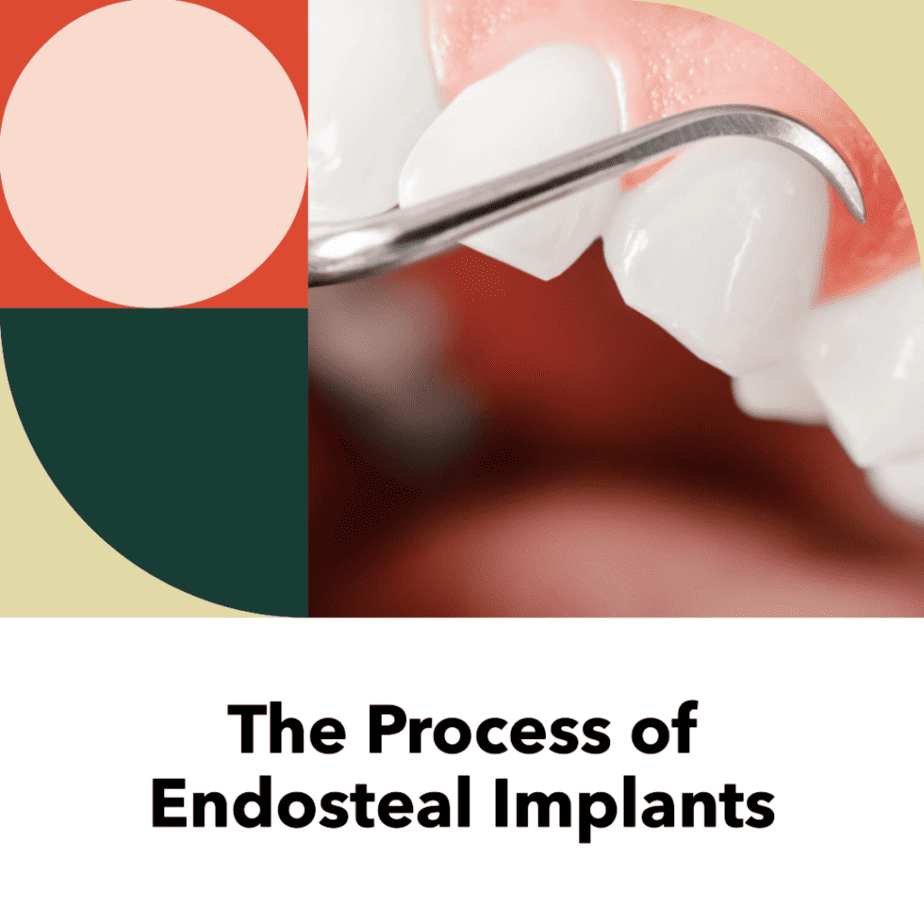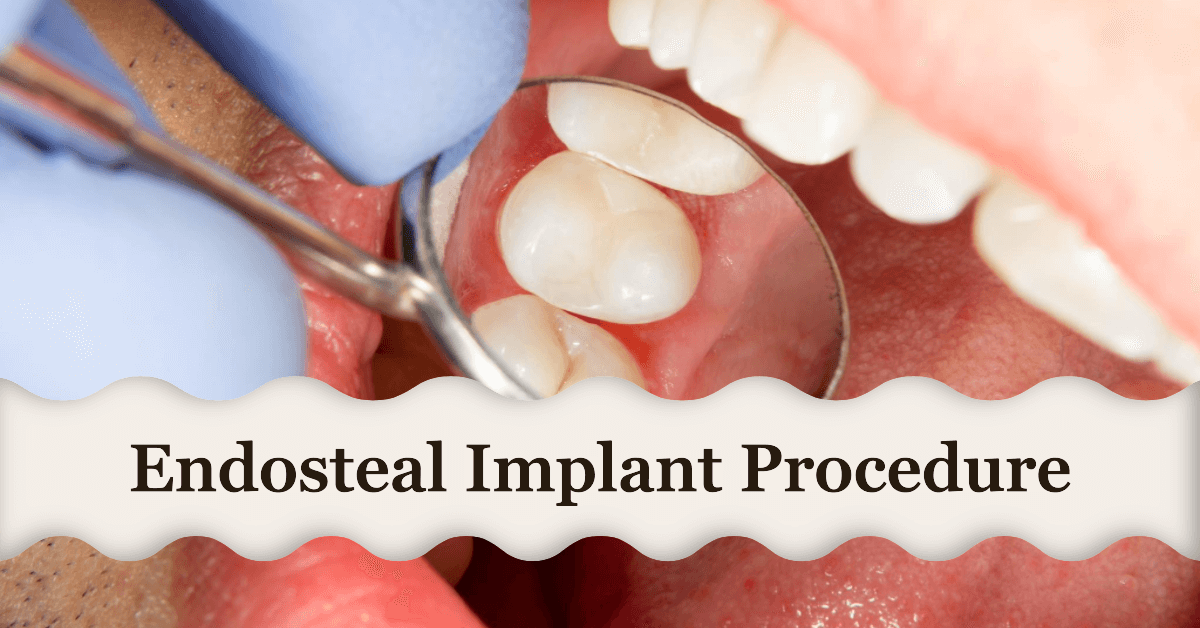Introduction
When it comes to replacing missing teeth and restoring your smile, dental implants have revolutionized modern dentistry. Among the various types of dental implants available, endosteal implants stand out as one of the most popular and effective options. These implants offer unparalleled durability, functionality, and aesthetics, making them a preferred choice for countless individuals seeking a long-term tooth replacement solution. In this comprehensive guide, we will explore the ins and outs of endosteal implants, from their definition and benefits to the procedure, aftercare, and considerations. Whether you are contemplating dental implants or curious about this cutting-edge dental technology, read on to discover how endosteal implants can be the key to regaining your confident smile.
Understanding Endosteal Implants
Endosteal implants are dental implants that are surgically placed directly into the jawbone. Composed of biocompatible materials such as titanium, these implants act as artificial tooth roots, providing a sturdy foundation for the replacement tooth or dental prosthetics. The term “endosteal” comes from the Greek words “endo” meaning “inside” and “osteal” referring to “bone,” reflecting the implant’s placement within the bone structure.
Compared to other tooth replacement options, such as dentures or bridges, endosteal implants offer significant advantages. The ability to integrate with the jawbone through a process called osseointegration makes them highly stable and long-lasting.

The Procedure: Placing Endosteal Implants
The journey towards achieving a confident smile with endosteal implants begins with a comprehensive examination and treatment planning. Dental professionals will evaluate the patient’s oral health, bone density, and overall suitability for the implant procedure. Advanced digital imaging technologies, like cone-beam computed tomography (CBCT), play a vital role in precisely planning the implant placement.
The surgical procedure involves making a small incision in the gum tissue to expose the jawbone. A hole is then carefully drilled into the bone to accommodate the endosteal implant. Once the implant is positioned securely, the incision is closed, and the healing process begins.
Benefits of Endosteal Implants
Endosteal implants come with a host of benefits that make them a preferred choice for tooth replacement:
a. Durability: Endosteal implants fuse with the jawbone, creating a robust and permanent foundation for the replacement tooth or dental prosthetic.
b. Aesthetics: The replacement teeth look and feel natural, enhancing the patient’s smile and overall appearance.
c. Functionality: Endosteal implants restore full chewing function, allowing patients to enjoy their favorite foods without restrictions.
d. Preservation of Adjacent Teeth: Unlike dental bridges, which require the alteration of neighboring teeth, endosteal implants leave adjacent teeth intact.
e. Longevity: With proper care and regular dental check-ups, endosteal implants can last a lifetime.
Candidacy and Patient Selection
While endosteal implants offer numerous benefits, not everyone may be an ideal candidate for the procedure. Sufficient bone density and volume are crucial for successful implant placement through osseointegration. Patients with inadequate bone may require bone grafting to strengthen the area for implantation. Additionally, good overall oral health is essential to minimize the risk of complications during and after the procedure.
Healing and Osseointegration
The success of endosteal implants depends on the process of osseointegration, wherein the implant fuses with the surrounding jawbone over several months. During this critical healing period, patients need to follow post-operative instructions diligently. Proper oral hygiene, avoiding certain foods, and attending regular dental check-ups are essential to support successful osseointegration.
Aftercare and Maintenance
Once osseointegration is complete, the permanent replacement tooth or dental prosthetic can be attached to the endosteal implant. Patients are advised to maintain excellent oral hygiene practices, including regular brushing, flossing, and professional dental cleanings. Dental professionals will closely monitor the implant and surrounding tissues during routine check-ups to ensure the continued success of the implant.
Potential Risks and Complications
While endosteal implants have a high success rate, there are potential risks and complications that patients should be aware of. These include infection, implant failure, nerve damage, and gum recession. However, with proper patient selection, meticulous planning, and skilled surgical execution, these risks can be minimized.
Innovations and Advancements in Endosteal Implants
The field of dental implantology continues to advance, leading to innovations that further improve the success and longevity of endosteal implants. Innovations such as computer-guided implant placement and the use of advanced materials contribute to enhanced patient outcomes and increased predictability.
Cost Considerations and Insurance Coverage
The cost of endosteal implant procedures can vary based on factors such as the number of implants needed, the complexity of the case, and the location of the dental practice. Dental insurance coverage for implants may also vary, with some plans offering partial or full coverage for eligible patients. It is essential for individuals considering endosteal implants to inquire about cost estimates and insurance coverage with their dental provider.
Alternative Options: Subperiosteal Implants and All-on-4
While endosteal implants are the most common type of dental implants, there are alternative options available for specific cases. Subperiosteal implants are placed on top of the jawbone but under the gum tissue, suitable for patients with insufficient bone height. The All-on-4 dental implant technique involves strategically placing four implants to support a full arch of replacement teeth, making it a viable option for those requiring extensive tooth replacement.
Real Patient Stories and Testimonials
Real patient experiences can provide valuable insights into the process and outcomes of endosteal implant procedures. Hearing success stories and testimonials from individuals who have undergone the treatment can help prospective patients feel more confident about their decision.
Also read, 10 second water tweak
Frequently Asked Questions about Endosteal Implants
To address common queries and concerns, we provide informative answers to frequently asked questions about endosteal implants. From the procedure’s safety to the cost and aftercare, we aim to empower readers with comprehensive information to make informed choices about their dental health.
1. What is an endosteal implant?
An endosteal implant is a dental implant that is surgically placed into the jawbone to act as an artificial tooth root. It provides a stable foundation for the replacement tooth or dental prosthetic.
2. What are the disadvantages of endosteal implants?
While endosteal implants offer numerous benefits, some disadvantages include potential risks like infection, implant failure, nerve damage, and gum recession. Additionally, not all patients may be suitable candidates due to insufficient bone density.
3. What is the difference between an endosteal implant and an abutment?
An endosteal implant refers to the actual implant that is placed into the jawbone, while an abutment is a connector that attaches to the implant. The abutment serves as a support structure for the replacement tooth or dental prosthetic.
4. What is an endosteal implant placement?
Endosteal implant placement is a surgical procedure where the dental implant is inserted directly into the jawbone. The process involves making a small incision in the gum tissue, drilling a hole into the bone, and securing the implant in place.
5. What is the success rate of endosteal implants?
The success rate of endosteal implants is remarkably high, ranging from 95% to 98%. Proper patient selection, meticulous planning, and skilled surgical execution contribute to the favorable outcomes.
6. How long does it take for endosteal implants?
The time it takes for endosteal implants varies depending on individual healing and osseointegration. Generally, it takes several months for the implant to fully integrate with the jawbone, after which the permanent replacement tooth or dental prosthetic can be attached.
Conclusion
Endosteal implants have revolutionized modern dentistry by offering a reliable, durable, and aesthetically pleasing tooth replacement solution. As dental technology continues to advance, endosteal implants remain at the forefront of restorative dentistry, transforming the lives and smiles of countless individuals. If you are considering tooth replacement options, consult with a qualified dental professional to determine if endosteal implants are the key to regaining your confident smile.

Hey, y’all! I’m Akshay!
I’m SO excited you’re here! I’m super passionate about nutrition and specialize in teaching others how to lose weight through healthy, low-carb eating along with Yoga and exercises. Here at Yourfitnessgoal, we believe in quality over quantity and that diet is EVERYTHING when it comes to your health and well-being. In short, we believe in a Fit and healthy lifestyle.

